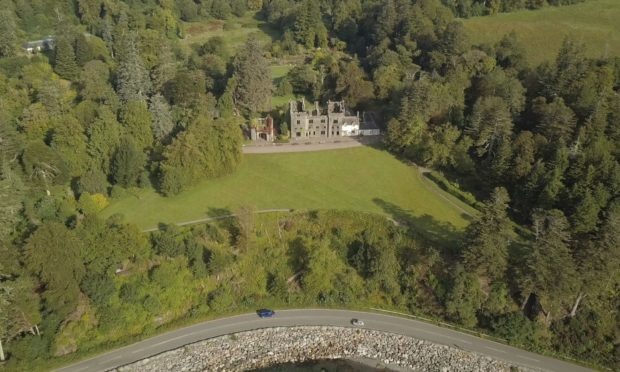A new exhibition has opened exploring the history of Clan Donald castles on Scotland’s western seaboard where it ruled for almost 400 years.
The clan’s leaders were Lord of the Isles and controlled a large and powerful empire that included the west coast and islands.
Created to mark Scotland’s 2020 Year of Coasts and Waters, the exhibition at The Museum of the Isles at Armadale Castle in Skye uses prints, drawings and maps from the museum archive, as well as photography and film, to trace the evolution of its castles, from 10th century fortifications to 19th century manor houses.
It features the ancient lordship home and centre of Finlaggan on Islay; Castle Sween in Argyll, which is Scotland’s earliest stone castle; the tower house of Ormacleit on South Uist; and Castle Camus (Knock Castle) on Skye, site of bloody inter-clan rivalry.
The exhibition also reveals characters and stories associated with the castles, such as the mythical warrior queen Scathach of Dunscaith, who lived around 200BC, and whose fortress was on Skye.
There is also castle builder Amie MacRuari, a 14th century noblewoman who became the divorced first wife of John of Islay, Lord of the Isles.
‘Coastal Castles of Clan Donald’ is sponsored by Torabhaig Distillery, the south Skye distillery that sits next to one of the featured castles, Castle Camus.
Museum manager Sue Geale said: “We are delighted to mark the re-opening of the museum with the launch of this exhibition.
“We have thoroughly enjoyed researching the stories behind these castles and unearthing material from our museum stores to illustrate them.”
Anne O’Lone, visitor centre manager at Torabhaig Distillery, added: “We are very pleased to support this exhibition being held at our neighbouring and highly acclaimed visitor attraction.
“We would encourage visitors to Sleat on the Isle of Skye to make a point of exploring this excellent exhibition and to come and visit us here at the distillery.”
Exhibition visitors can also explore the permanent galleries of the Museum of the Isles.
The museum traces the history of the Highlands and Islands through the story of Clan Donald, including Viking, Jacobite and crofting artefacts.
The VisitScotland five-star Armadale Castle, Gardens and Museum of the Isles in Sleat is part of a 20,000-acre estate that was once part of the traditional lands of Clan Donald.
The estate is now run by Clan Donald Lands Trust.
The museum and exhibition are open Thursday – Sunday until the end of November.
The castle gardens are open daily in August and then Thursday – Sunday until the end of November.










